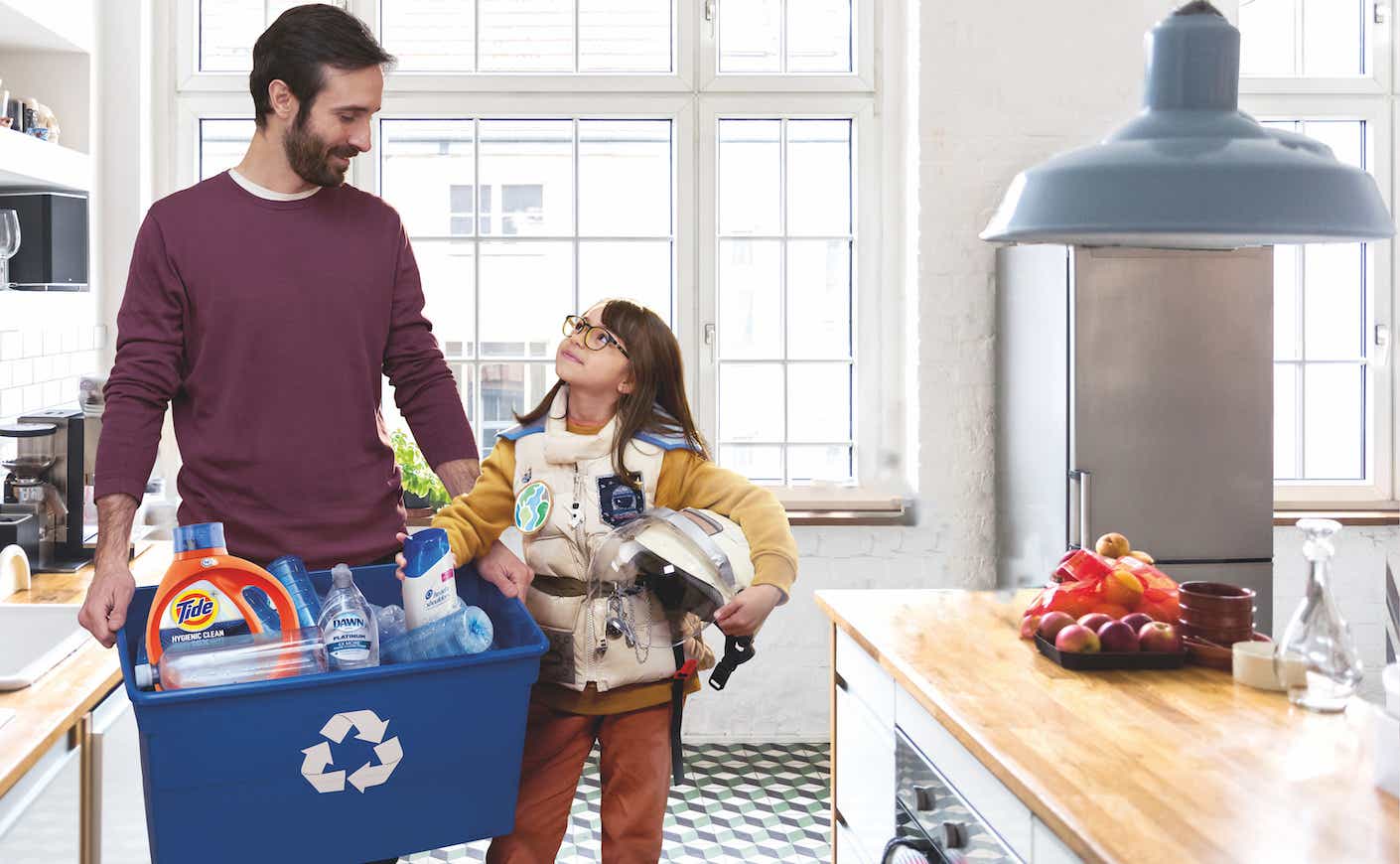Ironically, as the Covid-19 pandemic hit, spurring mass societal shutdowns, planet earth began healing. Air pollution has decreased, deforestation rates have changed in many places, and water quality has improved, per one study. Notably, people have also put a microscope to their individual carbon footprints.
“What we’ve seen during lockdown is that people have actually noticed for the first time things that they were taking for granted, like how much water they use,” P&G’s Chief Sustainability Officer, Virginie Helias, says. “Before, many were kind of on autopilot. But when you’re at home longer, you start seeing how much energy you waste.”
In light of Earth Day, KCM is highlighting P&G’s new campaign, “It’s Our Home.” As it pledges to be carbon neutral for the rest of the decade, the company is making it easier for you, and other consumers, to lower your own carbon footprint and make a difference in saving the planet we love so much.
In a new interview, Helias explains how she stays sustainable on a daily basis — and offers three habits you can start practicing today.
What was the inspiration behind P&G’s new campaign in the first place?
The idea was actually born a year ago in April 2020. During the pandemic, many of us have become more grateful for our homes than ever before, and even moreso, for planet Earth — our shared home.
Around the same time, 71% of people we talked to were saying that climate was just as important of an issue as Covid-19. Once we started a conversation with them, they said they would like to do something about the climate crisis on their own. So we couldn’t have had a clearer case for action!
84% of P&G’s carbon footprint actually happens in the consumer-use phase. We launched this campaign to bridge what we call, “the intention-to-action gap.” There’s a big difference between wanting to do more and actually doing it. It’s complicated because people often don’t know exactly what to do, and they believe that their own little actions don’t matter in the grand scheme of things.
So, as the Chief Sustainability Officer, how do you practice sustainability in your own life?
In my own life, I’m very driven by impact. And so I usually look at where I can make the biggest differences.
For example, I don’t eat meat anymore, and I have an extremely sophisticated recycling system with nine different streams of things that I recycle. I take showers instead of baths, because baths can use up to 30 gallons of water. Even if you stay eight minutes in your shower, you don’t use more than 18 gallons. Now when I apply my conditioner, I actually turn off my shower. I also buy way less clothing than I’m used to.
These are great examples! What are some additional ways people can make sustainable changes in their own lives?
We talk a lot about climate, but less about water. Water is important to touch on because about 70% of our products require water for use. So my first tip is to wash your clothes in cold water, and make sure you choose a detergent that delivers good results in cold water, like Tide.
Secondly, run your dishwasher instead of doing dishes by hand. People often think that running a dishwasher is a waste of energy and water, but in reality it’s the exact opposite. When you do your dishes by hand, in the sink, you basically use four gallons of water every two minutes. Four
gallons of water is what it takes to do a full load in the dishwasher. If you do these first two things, you can save up to hundreds of gallons of water per week in your household. That’s huge.
My third tip might be a bit more difficult. You should try out refills, so you’re not going through a ton of wasteful packaging. In Europe for example, we’ve launched full haircare lines that come in refillable aluminum bottles. And in the U.S., you can get new heads for versions of your Oral B toothbrush. Trust me, once you try refills, you won’t want to go back.
I would say pick one of things, and do it for 21 days so you’ve formed a habit. Then, go to the next one.
Obviously, the consumer component is really important in our mission to save the planet, but what are some milestones P&G, as a company, has recently reached?
In 2010, we made a commitment to have 70% of all washing machine loads be low-energy wash cycles by 2020. And we reached this goal in 2019! One thing I’m most proud of is a framework we’ve developed for looking at our brands. We’re focusing on putting sustainability at the core of each product we have. For example, our new shaving and skincare brand, Planet KIND by Gillette, comes in recyclable packaging and includes a razor made with 60% recycled plastic.
Then, last summer we announced a new climate goal, which is to be carbon neutral by the end of the decade. And we’ve already started doing it, first by reducing our own emissions by 50%. We’re also investing in natural climate solutions and creating carbon benefits, by working in places like Brazil to help save the Amazon rainforest, which is a huge source of carbon we want to protect.
What do you think is the importance of collaboration between P&G as a brand, and consumers?
We could develop the best product in the world, but if people don’t use the products responsibly, then it defeats the point. We want to enable our customers to live a more sustainable lifestyle, which then translates into cross-sector collaboration. I think it is very important that we use this collaborative effort to drive impact at scale.
This interview has been edited and condensed.
Written by Weekend Editor Amanda Svachula.









